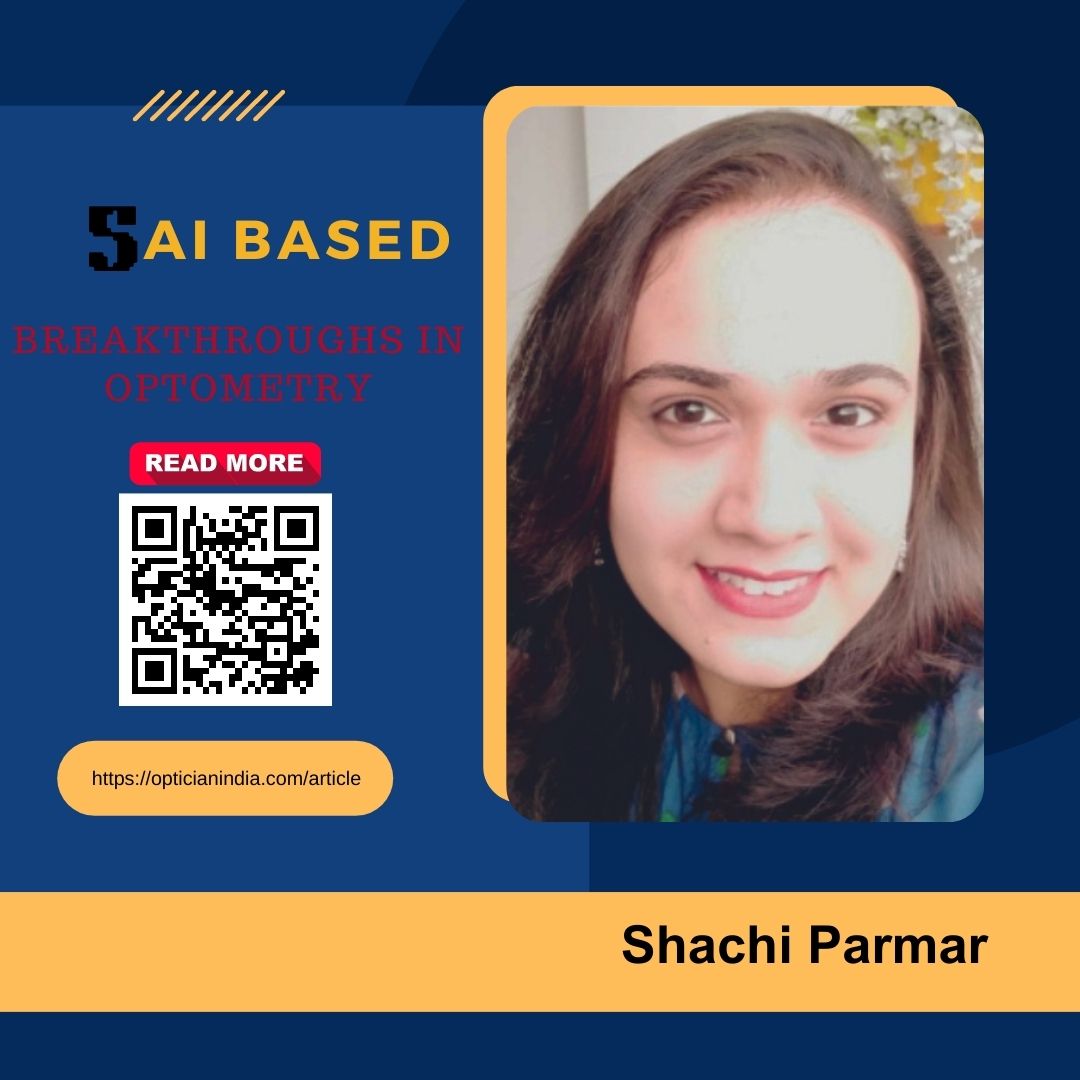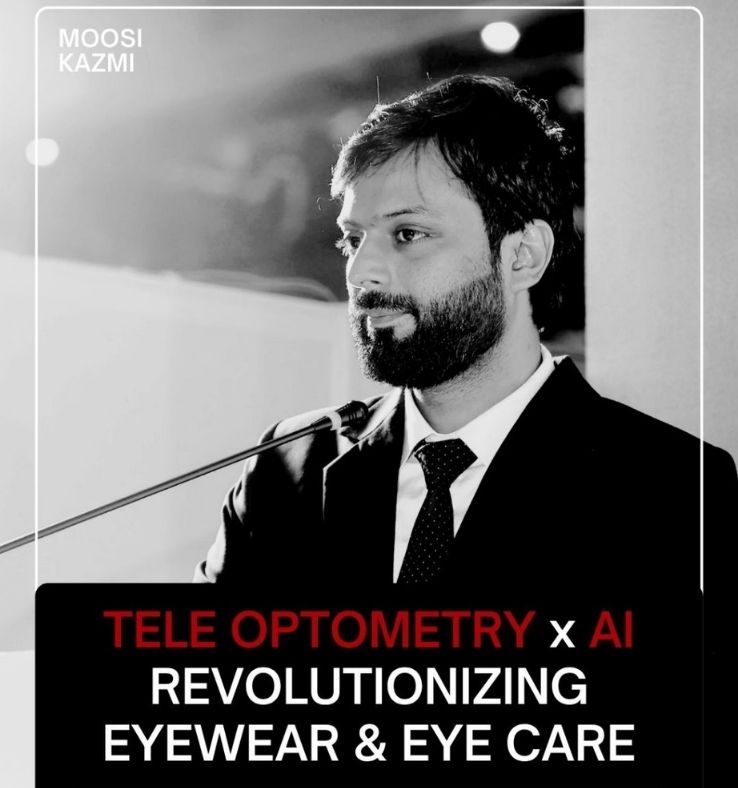Sai Based Breakthroughs in Optometry

Just like human evolution, optometry also has evolved at great lengths. Snellen's chart in 1862, autorefractors in the 1970s and phoropters in the 1900s, a great many machinery and equipment have been introduced in the optical industry. Altogether, we have raised the bar of eye care over the decades. Now that we are in the year 2023, we must reflect on whether we are ahead of the technology curve or at least at par with the latest innovation in optometry. For eye care practices, this article will serve as the correct update. So, read on.
1. IDx-DR for diabetic retinopathy assessment
Uncontrolled diabetes, in general, is a major contributor to ocular diseases. A study conducted in the US by CDC suggests that diabetic retinopathy is a major cause of legal blindness. Type 1 and nearly one in two type 2 diabetic patients are likely to have some form of retinopathy. Without a doubt, it takes a toll on a patient's life if left undetected. 90% of these cases can be prevented with early detection. Hence, IDx-DR for diabetic retinopathy assessment.
IDx-DR is an AI-based program approved by the FDA that brings a breakthrough in diabetic retinopathy screening.Since it does not require ECP intervention, it applies in various areas of healthcare, the goal being early detection.
The AI program analyzes retinal images taken by the ophthalmic camera, which the cloud server stores. The IDx-DR algorithm then screens these images and produces the outcomes. In the case of abnormal diabetic retinopathy, it refers to an ECP, and in a mild case, it suggests a retest within a year.
While it does not eliminate the detailed and dilated eye exam, it does increase the detection rate if applied to several optical practices.
2023-07-14T13_21_52.jpg) |
2. Pegasus AI for glaucoma assessment
The next significant cause of blindness is Glaucoma. Another report by the CDC suggests that Glaucoma is the second leading cause of blindness around the world. Since it is a gradually degrading eye condition, it often goes undetected until the visual field loss becomes irreversible. It is possible to preserve vision if the condition is detected early on. Hence, Pegasus AI.
Pegasus is an AI-based program developed by Visulytix, London, that examines optic disc screening for glaucoma detection. The program is studied to be as diagnostically accurate as an early diagnosis by ophthal-mologists and optometrists. Although Pegasus is not out in the market, various academic institutions and healthcare facilities across the globe are conducting tests to check its efficiency.
_fundus_image_typical_of_the_data_set_used_to_train_Pegasus_(left),_and_a_scanned_stereoscopic_optic_disc_slide_from_the_EODAT.jpg) |
_[2]_that_were_used_in_this_evaluation.jpg) |
3. Smart contact lenses for glaucoma management
onitoring IOP (Intraocular pressure) is quintessential for curbing glaucoma progression. IOP readings tend to fluctuate and exceed 9mmHg in glaucoma patients, unlike non-glaucoma patients whose diurnal fluctuations are relatively less throughout the day. Thus, continuous monitoring is inevitable.
Sensimed, a Swiss company, introduced the Triggerfish contact lens sensor in 2016. It is FDA-approved for marketing contact lenses to detect IOP changes in a day. The accumulated data helps segment patients at higher risk for Glaucoma.
Triggerfish is a silicone-based 14.1mm dia soft contact lens that is comfortable to wear 24 hours straight. This CLS has two strain gauges to detect small but prompt circumferential changes at the corneoscleral area during the time they are worn. IOP reading from CLS transmits to portable records worn by patients and later transfers to a computer or other storage via Bluetooth for analysis.
4. Seeing AI by Microsoft for low vision
Age-related macular de-generation (AMD), diabetic retinopathy, and Glaucoma have all recently seen improvements in treatments, although some of these disorders will still ultimately cause persistent, irreparable vision loss. The best way to restore their everyday life is through low vision services that help them gain independence with visual assistance. Kudos to AI blind or low vision patients who now have hope with technology emergence.
Microsoft's latest mobile application For people with limited vision, 'Seeing AI' transforms the visual world into an audio experience.
The programme uses the camera on the smartphone to identify items, labels, money, and text verbally. The software may also identify persons' names and/or physical characteristics by using facial recognition. Low-vision individuals can augment their declining eyesight with additional sensory input thanks to access to technology like Seeing AI, OrCam and Iris Vision.
5. DeepMind by Google for OCT scans
Monitoring IOP (Intraocular pressure) is quintessential for curbing glaucoma progression. IOP readings tend to fluctuate and exceed 9mmHg in glaucoma patients, unlike non-glaucoma patients whose diurnal fluctuations are relatively less throughout the day. Thus, continuous monitoring is inevitable.
Sensimed, a Swiss company, introduced the Triggerfish contact lens sensor in 2016. It is FDA-approved for marketing contact lenses to detect IOP changes in a day. The accumulated data helps segment patients at higher risk for Glaucoma.
Final words
The intervention of AI in optometry is sure to be a boon. Not only Glaucoma, low vision and diabetic retinopathy, but AI breakthroughs are also paving the way for the detection of Age-related macular degeneration, Cataracts, and more. Early detection from AI-based screenings will improve the quality of life for numerous patients. It will ultimately aid in preventing blindness worldwide while also relaxing the burden on healthcare systems globally. It is not far when AI will work hand-in-hand with ECPs to detect and monitor eye conditions in eye patients. With eyes on the future, I now conclude this article.


.jpg)
.jpg)
.jpg)
.jpg)


1.jpg)



.jpg)
.jpg)



_(Instagram_Post).jpg)
.jpg)
_(1080_x_1080_px).jpg)


with_UP_Cabinet_Minister_Sh_Nand_Gopal_Gupta_at_OpticsFair_demonstrating_Refraction.jpg)
with_UP_Cabinet_Minister_Sh_Nand_Gopal_Gupta_at_OpticsFair_demonstrating_Refraction_(1).jpg)

.jpg)








.jpg)



.png)




